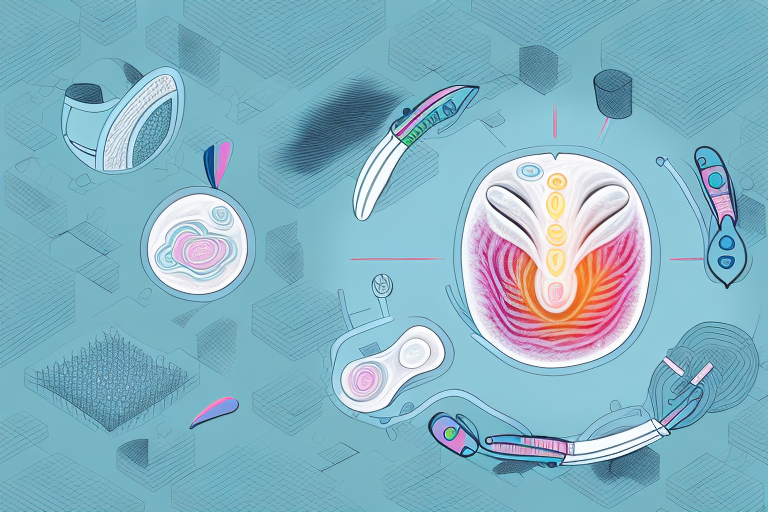If you suffer from muscle tension and pain, you know how debilitating it can be. Luckily, there are several effective ways to address these issues, one of which is deep tissue massage therapy. For those who don’t have access to a professional massage therapist or don’t have the time to schedule regular appointments, a mini massager can be a valuable tool in providing much-needed relief from muscle tension and pain. In this article, we’ll explore what a mini massager is, how it works, and how to choose the right one for your needs. We’ll also share tips on using a mini massager effectively, as well as some alternatives to deep tissue massage therapy.
What is a Mini Massager and How Does it Work?
A mini massager, as the name suggests, is a small handheld device designed to provide relief from muscle tension, knots, and pain. It can be used on different parts of the body, including the neck, back, shoulders, arms, and legs. Mini massagers come with various features, such as different massage heads, speed settings, and heat therapy. Some models are battery-operated, while others can be charged using a USB cord or a wall outlet.
Mini massagers work by applying pressure and vibration to the affected area. The massage heads are designed to mimic the movements of a professional massage therapist’s hands, targeting specific areas with precision. The vibration helps to increase blood flow to the area, which can reduce inflammation and promote healing. Heat therapy can also help to loosen tight muscles and provide additional pain relief.
The Benefits of Deep Tissue Massage Therapy
Deep tissue massage therapy is a type of massage that targets the deeper layers of muscle and connective tissue. It is a popular choice for people who suffer from chronic pain, muscle tension, and limited mobility. Deep tissue massage therapy can help to break up scar tissue, improve circulation, and reduce inflammation, which can lead to reduced pain and increased range of motion.
Some of the benefits of deep tissue massage therapy include improved posture, reduced stress and anxiety, better sleep, and improved immune function. It can also be used to treat certain medical conditions, such as fibromyalgia, arthritis, and sports injuries.
How to Choose the Right Mini Massager for Your Needs
Choosing the right mini massager for your needs can be a bit overwhelming, as there are many different models and features to consider. Here are some factors to keep in mind:
- Type of massage head: Look for mini massagers that come with different massage heads for different types of massage, such as a shiatsu head for deep tissue massage or a kneading head for relaxation massage.
- Speed settings: Choose a model with multiple speed settings, so you can adjust the intensity of the massage according to your needs.
- Heat therapy: If you suffer from chronic pain, look for a model with heat therapy, which can provide additional pain relief.
- Battery life: If you plan to use your mini massager frequently, choose a model with a long battery life or one that can be charged using a USB cord or a wall outlet.
Using a Mini Massager to Relieve Muscle Tension and Pain
Using a mini massager is relatively straightforward, but there are a few tips to keep in mind:
- Start slow: Begin with the lowest speed setting and gradually increase the intensity as your muscles loosen up.
- Target specific areas: Focus on areas that are particularly tight or painful, such as the neck or lower back.
- Use heat therapy wisely: If your mini massager comes with heat therapy, use it for no more than 20 minutes at a time to avoid overheating the area.
- Stay hydrated: Drinking plenty of water before and after using your mini massager can help to flush out toxins and prevent muscle soreness.
Tips for Getting the Most Out of Your Mini Massager
If you want to get the most out of your mini massager, here are a few additional tips to keep in mind:
- Use it regularly: To see the most benefits, use your mini massager regularly, ideally once a day or as needed.
- Combine with other therapies: Deep tissue massage therapy and mini massagers can be even more effective when combined with other therapies, such as stretching, foam rolling, and yoga.
- Clean it regularly: Keep your mini massager clean and hygienic by wiping it with a damp cloth after each use.
Alternatives to Deep Tissue Massage: When a Mini Massager May Not Be Enough
While mini massagers can be highly effective in providing relief from muscle tension and pain, they may not be enough for everyone. Some alternatives to deep tissue massage therapy include acupuncture, chiropractic care, physical therapy, and medications for pain management. If you have a medical condition or chronic pain, it’s essential to consult with a healthcare professional before using a mini massager or any other type of therapy.
The Science Behind Deep Tissue Massage and Its Effectiveness
Several studies have looked at the effectiveness of deep tissue massage therapy in treating various medical conditions. A 2014 study found that deep tissue massage therapy was more effective than traditional Swedish massage in reducing pain and improving range of motion in people with chronic low back pain. Another study published in the International Journal of Therapeutic Massage and Bodywork found that deep tissue massage therapy was effective in reducing muscle soreness and improving recovery time after high-intensity exercise.
The science behind deep tissue massage therapy lies in its ability to increase blood flow to the affected area, which can reduce inflammation and promote healing. It can also help to break up scar tissue and improve muscle flexibility and range of motion.
Common Misconceptions About Deep Tissue Massage and How a Mini Massager Can Help
One common misconception about deep tissue massage therapy is that it’s painful or uncomfortable. While deep tissue massage can be intense, it shouldn’t be painful. Communicating with your massage therapist and using a mini massager can help to control the intensity of the massage and make it more comfortable.
Another misconception is that deep tissue massage therapy is only for athletes or people who are highly active. In reality, deep tissue massage therapy can benefit anyone who suffers from muscle tension and pain, regardless of their level of activity.
A Beginner’s Guide to Using a Mini Massager for Relaxation and Pain Relief
Using a mini massager for the first time can be a bit intimidating, but it doesn’t have to be. Here’s a beginner’s guide to using a mini massager for relaxation and pain relief:
- Choose a quiet, comfortable space. Find a quiet, comfortable place to use your mini massager where you won’t be interrupted.
- Start with your neck and shoulders. Begin by using your mini massager on your neck and shoulders, which tend to hold a lot of tension and can benefit from massage therapy.
- Gradually increase the intensity. Start with the lowest speed setting and gradually increase the intensity over time as your muscles loosen up.
- Experiment with different massage heads. Try out different massage heads to find the ones that work best for you and your specific needs.
- Use it regularly. To see the most benefits, use your mini massager regularly, ideally once a day or as needed.
Conclusion
A mini massager can be an excellent tool for providing relief from muscle tension and pain, particularly for those who don’t have access to a professional massage therapist or don’t have the time to schedule regular appointments. By selecting the right model and using it correctly, you can experience the benefits of deep tissue massage therapy in the comfort of your own home.





